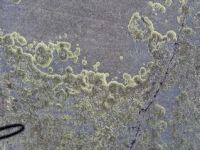What is Soil?
Soil is the foundation of life and of civilization on this planet. Whether we are growing a garden or having a BBQ on the balcony of our highrise apartment we are connected to and dependent on the soil.
"Essentially, all life depends upon the soil ... There can be no life without soil and no soil without life; they have evolved together." Charles E. Kellogg, USDA Yearbook of Agriculture, 1938
A healthy soil is made up of about 50% porous spaces, 45% pulverized rock and 5% organic matter. It is sometimes called the living skin of the Earth. It rests on a bed of rock - the parent material from which its mineral, non-living portion was formed. The living organisms, both dead and alive, create a web of life that makes life possible on the planet.
James Nardi, a biologist, describes soil as a marriage between the mineral or inorganic world and the organic world. The minerals provide many of the elements essential for plant life. But without their organic partners these mineral would be difficult or even impossible for the plants to access.
"Rain, wind, sun, and ice all help convert rock to soil, but it is the living creatures that clearly make the soil hospitable for other living forms." James B. Nardi, Life in the Soil, 2007. Where, you might wonder, does compost fit in?
Well, compost is the way we can have the best possible influence on soil building. Making compost and adding it to soil improves the soil structure, provides habitat for the incredible diversity of soil life that exists primarily to help plants get the nutrients they need, in a form they can use, when they need it.
How great is that? And we, by the simple act of composting get to contribute to this miracle in a very positive and vital way.
How is Soil Formed and How Long Does It Take?
Soil formation is a long slow process. It's estimated that an inch of soil takes 500 to 1000 years to form. Soil is constantly being formed. It is also constantly being eroded.
Stage One
This is the rock pulverizing stage. Here the forces of wind, rain, freezing and thawing water, earthquakes, volcanos all work to slowly pulverize rocks into smaller partcles that can make up a soil.
At the end of this stage we have most likely a combination of sand, silt and clay sized particles. These form a mineral soil like substance but are unable to support life.
They are missing nitrogen. It may seem nitrogen should be the least of a being's worries. After all the air we breath is made up of about 78% nitrogen gas. The problem is that plants can not use nitrogen in this form. For them it needs to be converted to either ammonia which is a combination of nitrogen and hydrogen or nitrates - a combination of nitorgen and oxygen.
Stage Two
This is the early stage of what we might call soil. Here we add some life, specifically lichens.
Lichens are a symbiotic relationship of algae and fungus. The algae has the very important role of fixing the nitrogen, changing it from nitrogen gas to a form the plant can use. It also captures the sunlight and creates sugars and oxygen. The fungus provides a place for the algae to live, along with water and the mineral nutrients it needs.

|
Here very old lichens begin the process of soil formation. This is in Churchill MB. |
Lichens are very long lived - hundreds to thousands of years and they also further break down rock with acids they produce. About 8% of the earth is covered by lichens.
Lichens are joined by mosses, bacteria, protozoa, and fungi. These form a complex cooperatve community that works to store nitrogen, nutrients and water to foster the growth of new plants.
Stage Three
At this time the little pockets of soil have formed to the extent that some larger plants, plants with roots can have a go at growing.
The first pioneers will be short lived but as their bodies are added to the layers of soil forming the soil becomes more capable of supporting life. Humus builds and soil horizons begin to form.
Stage Four
The soils are developed enough to support thick vegetation.


